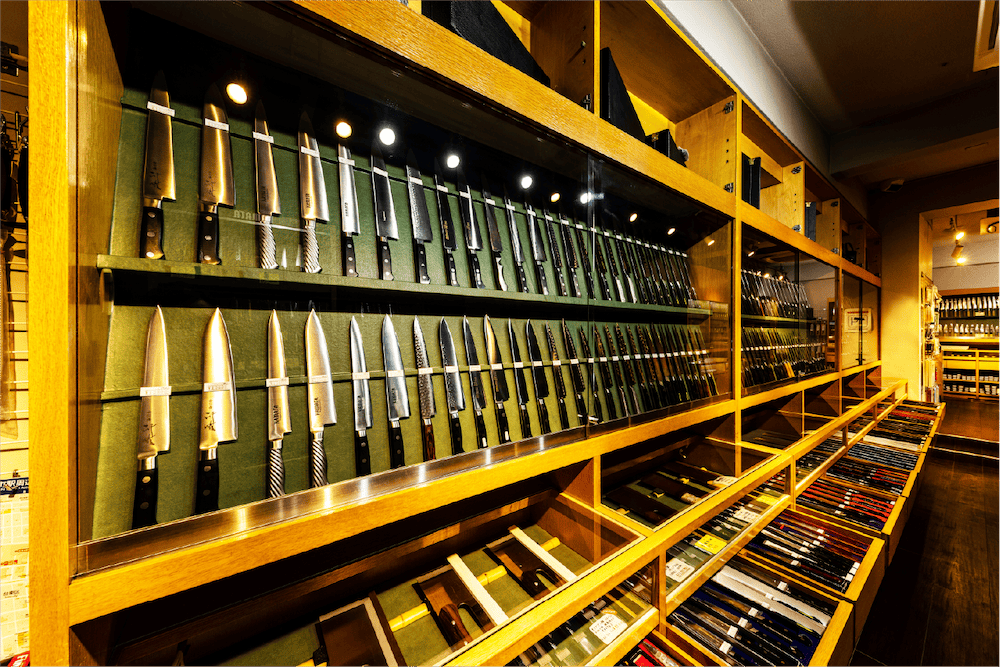Kasumi jiage (haze finishing) is a polishing technique that imparts a distinctive pattern to the blade of a knife or blade. This technique is often seen in traditional Japanese knife making. Kasumi finishing creates a beautiful pattern on the blade and gives the blade a unique character.
The features of Kasumi Finishing are as follows
- Principle of the pattern: In haze finishing, steel materials with different properties are laminated to form the blade. This allows the different reactions of the different steels to produce a pattern (haze or sink mark pattern).
- Beautiful appearance: The haze finish creates a beautiful pattern that adds color to the appearance of knives and blades. This is an aesthetic element backed by traditional craftsmanship and enhances the pleasure of knife ownership.
- Durability: The combination of laminated steels provides increased durability to the knife blade. Combining the strengths of different steels can improve the hardness, flexibility, and sharpness of the blade.
- Hand Finishing: Kasumi finishing is a delicate manual process that requires a high level of skill on the part of the craftsman. Careful attention to detail and attention to detail are required to create a uniform and beautiful pattern on the blade.
Kasumi-finishing emphasizes the artistic element of knife-making and is regarded as a technique that brings a high sense of quality to the blade. It is an aesthetic element rooted in traditional Japanese knife culture and an important feature for knife enthusiasts and collectors.
*This is a translation by a translation tool.

